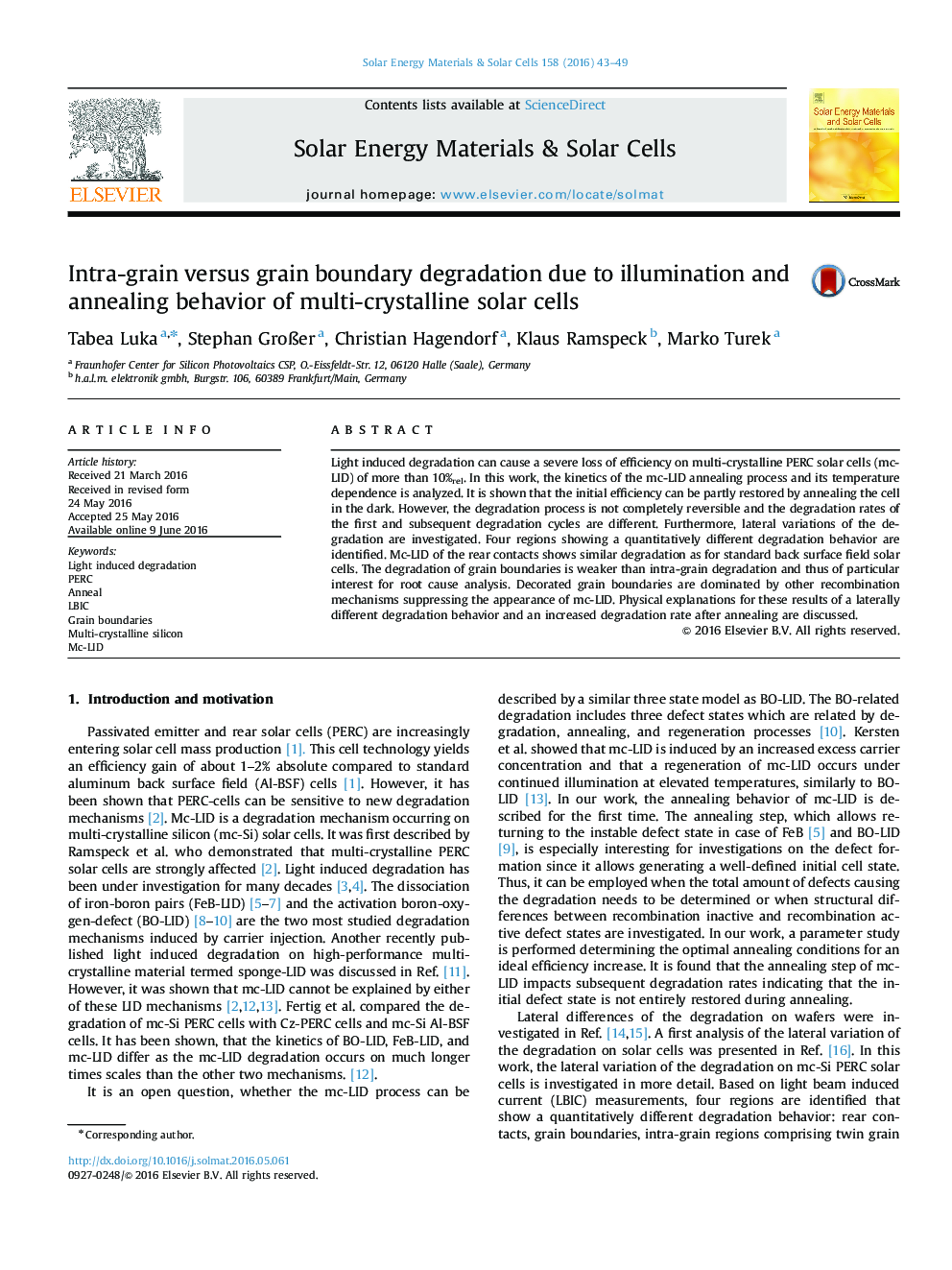| Article ID | Journal | Published Year | Pages | File Type |
|---|---|---|---|---|
| 6457417 | Solar Energy Materials and Solar Cells | 2016 | 7 Pages |
â¢The light induced degradation of multi-crystalline PERC solar cells is investigated.â¢The annealing process and the lateral properties of the degradation process are studied.â¢It is shown that the degradation rates of the first and subsequent degradation cycles after annealing differ.â¢Laterally, intra-grain regions show the strongest degradation.â¢Local structural defects at grain boundaries inhibit degradation.
Light induced degradation can cause a severe loss of efficiency on multi-crystalline PERC solar cells (mc-LID) of more than 10%rel. In this work, the kinetics of the mc-LID annealing process and its temperature dependence is analyzed. It is shown that the initial efficiency can be partly restored by annealing the cell in the dark. However, the degradation process is not completely reversible and the degradation rates of the first and subsequent degradation cycles are different. Furthermore, lateral variations of the degradation are investigated. Four regions showing a quantitatively different degradation behavior are identified. Mc-LID of the rear contacts shows similar degradation as for standard back surface field solar cells. The degradation of grain boundaries is weaker than intra-grain degradation and thus of particular interest for root cause analysis. Decorated grain boundaries are dominated by other recombination mechanisms suppressing the appearance of mc-LID. Physical explanations for these results of a laterally different degradation behavior and an increased degradation rate after annealing are discussed.
